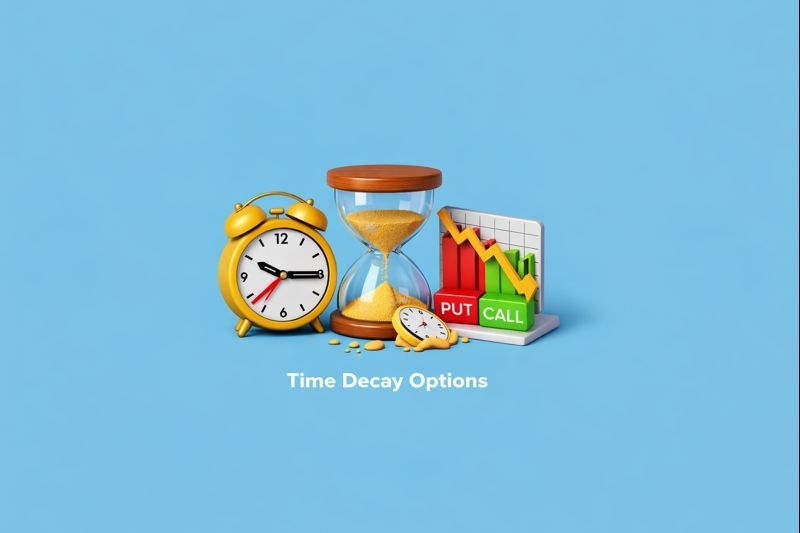- Home
- Blog
- Demat Account
- Pre-Market and Post-Market Session
- Pre-Market and Post-Market Session
Pre-Market and Post-Market Session

- Published Date: October 01, 2024
- Updated Date: June 17, 2025
- By Team Choice
Everyone knows about the trading hours of NSE and BSE on Mondays to Fridays from 9:15 AM to 3:30 PM. All types of traders follow market news precariously to speculate on stock prices and earn profits. Have you ever wondered whether you can purchase stocks outside these trading hours? It is possible to execute certain types of trades at volatile prices in the pre and post-market sessions. These are available only for the equalities segment. Let's explore what it means, how prices are determined, and who can place such trade orders.
What is a Pre-Market session?
The pre-market session is the time period from 9:00 AM to 9:15 AM before the trading session starts on NSE On or BSE. The 15 minutes before the beginning of a trading session is utilised to stabilise the stock price in the equity market. When major events or announcements are made before market opening, there might be a high volatility in pricing. The pre-market session is introduced to arrive at the opening price of a stock for the upcoming trading session.
Several events, like the de-listing of stocks, merger and acquisition announcements, debt restructuring, credit rating changes, etc, can have a huge impact on the stock price during a trading session. The pre-open market session effectively stabilises the opening price by evaluating the actual demand and supply of shares for the upcoming trading session. This controls the volatility of stock pricing as the opening price is not determined based on trends.
Pre-Market Session Breakup
The 15 minutes of the pre-market session is divided into 3 sessions:
1. Order entry
From 9:00 AM to 9:08 AM - 8 minutes
- During this time period, traders can place an order to buy and sell stocks
- Orders can also be placed for modification or cancellation
- No order can be placed after 9:00 and 8:00 AM.
2. Order matching session
From 9:08 AM to 9:12 AM - 4 minutes
- During this session, Order matching and order confirmation are executed
- The opening price of stocks for the normal session will be calculated
- During the matching session, no one is allowed to buy, sell, modify, or cancel orders
During the order matching period, orders are matched in the following sequence:
- Eligible limit orders are matched with eligible limit orders
- Residual eligible limit orders are matched with market orders
- Market orders are matched with market orders
The order matching session happens at the single equilibrium price, which will be the open price of the market session.
3. Buffer session
From 9:12 AM to 9:15 AM - 3 minutes
- During the buffer session, the transition happens from the pre-market to the regular market session.
- Inconsistence or errors that occurred during the previous two sessions are corrected, and the market will be opened for trading
- No order placing or modifying activity is allowed
Then, the trading session starts strictly at 9:15 AM.
How is the Opening Price Calculated During the Pre-Open Market Session?
The opening price calculation is done according to the following rules:
- Identify the price level with the highest maximum tradable quantity.
- If multiple prices have the same maximum tradable quantity, compare the unmatched orders at each price. Choose the price with the lowest unmatched orders.
- If multiple prices have the same maximum tradable quantity and unmatched orders, consider the proximity to the previous day's closing price. The price closest to the previous day's closing price is the equilibrium price.
- If the previous day's closing price is exactly between two other prices, the previous day's closing price itself is the equilibrium price.
- In case of corporate actions, adjust the previous day's closing price before calculating the equilibrium price.
Let's understand pre-market session equilibrium price calculation with an example:
Consider the previous day's closing price for this company's stock, which is 103. There can be 4 scenarios during the pre-open session in the stock market.
Scenario 1
Price | Buy | Sell | Demand | Supply | Max_Tradable_Quantity | Unmatched Orders |
103 | 13500 | 11500 | 11500 | 50500 | 11500 | 39000 |
104 | 9500 | 9800 | 21300 | 37000 | 21300 | 15700 |
105 | 12000 | 15000 | 36300 | 27500 | 27500 | 8800 |
106 | 6500 | 12000 | 48300 | 15500 | 15500 | 32800 |
107 | 5000 | 12500 | 60800 | 9000 | 9000 | 51800 |
108 | 4000 | 8500 | 69300 | 4000 | 4000 | 65300 |
The price level with the highest maximum tradable quantity is 105, with a maximum tradable quantity of 27,500. So, the equilibrium price is 105.
Scenario 2
Price | Buy | Sell | Demand | Supply | Max_Tradable_Quantity | Unmatched Orders |
103 | 13500 | 11500 | 11500 | 50500 | 11500 | 39000 |
104 | 9500 | 9800 | 21300 | 37000 | 21300 | 15700 |
105 | 12000 | 15000 | 36300 | 27500 | 21300 | 8800 |
106 | 6500 | 12000 | 48300 | 15500 | 15500 | 32800 |
107 | 5000 | 12500 | 60800 | 9000 | 9000 | 51800 |
108 | 4000 | 8500 | 69300 | 4000 | 4000 | 65300 |
The prices 104 and 105 both have a maximum tradable quantity of 21,300. Since the unmatched order quantity at price 105 (8800) is smaller than the unmatched order quantity at price 104 (-15700), the equilibrium price in this scenario is 105. This is because, at price 105, there's a smaller gap between the demand and supply, indicating a more balanced market.
Scenario 3
Price | Buy | Sell | Demand | Supply | Max_Tradable_Quantity | Unmatched Orders |
103 | 13500 | 11500 | 11500 | 50500 | 11500 | 39000 |
104 | 9500 | 9800 | 21300 | 37000 | 15700 | 15700 |
105 | 12000 | 15000 | 36300 | 27500 | 15700 | 15700 |
106 | 6500 | 12000 | 48300 | 15500 | 15500 | 32800 |
107 | 5000 | 12500 | 60800 | 9000 | 9000 | 51800 |
108 | 4000 | 8500 | 69300 | 4000 | 4000 | 65300 |
In this updated table, prices 104 and 105 have the same maximum tradable quantity and unmatched orders. However, price 104 is closer to the previous day's closing price (103). So, the equilibrium price is 104.
Scenario 4
Price | Buy | Sell | Demand | Supply | Max_Tradable_Quantity | Unmatched Orders |
102 | 13500 | 11500 | 11500 | 50500 | 11500 | 39000 |
104 | 9500 | 9800 | 21300 | 37000 | 15700 | 15700 |
105 | 12000 | 15000 | 36300 | 27500 | 15700 | 15700 |
106 | 6500 | 12000 | 48300 | 15500 | 15500 | 32800 |
107 | 5000 | 12500 | 60800 | 9000 | 9000 | 51800 |
108 | 4000 | 8500 | 69300 | 4000 | 4000 | 65300 |
In this scenario, the previous day's closing price (103) is exactly the middle of prices 104 and 105. Both prices have the same maximum tradable quantity and unmatched orders and are equally close to the previous day's closing price. So, the equilibrium price will be the same as last day's closing price, 103.
What is a Post-Market Session?
The post-market session is accessible from 3:40 PM to 4.00 PM. During the post-market session, you can place a purchase or sell orders at the market. All orders will be executed as market orders at the closing price of the exchange. Traders can use the CNC code at the market price for such orders.
For example, if the closing price of a share is Rs. 300 and you place a market order between 3:40 PM and 4:00 PM, your order will be placed at Rs. 300 only.
Compared to the pre-market session, the activity level in the post-market session is limited.
After Market Orders (AMOs)
Traders who cannot follow the market during trading hours can place after-market orders. You can place AMOs on Friday (after market closing), Saturday, and Sunday. Your broker will send the AMO order on the next opening day, Monday, at 9:00 AM. Once the market opens, it will be executed based on the prevailing market conditions at 9:15 AM.
Who can Conduct Trades During Pre and Post Market Sessions?
Technically, any trader is allowed to execute pre and post-market sessions. However, not all brokers offer this opportunity. You should check with your broker whether your trading account is eligible for pre and post-market session trading. Generally, newbie traders are discouraged from participating in pre and post-market sessions due to the increased volatility.
Conclusion
The pre-market session stabilises stock prices before the regular trading day by assessing demand and supply, while the post-market session facilitates orders at the closing price. AMOs are trades placed after market hours and executed at the next opening. Traders should confirm their eligibility and understand the implications of these trading periods to optimize their strategies and manage risks effectively.
Recommended for you

Time Decay Options

Option Hedging Strategies

FII DII Data - Live Data
